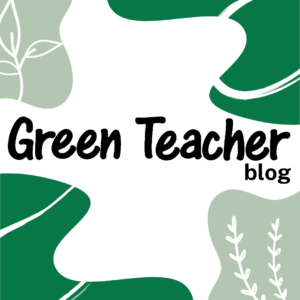
By Bob Coulter
Like many environmental educators, my workers and I battle to advertise direct expertise with nature in an more and more digital world. This pressure is captured within the 4th grade scholar quoted in Richard Louv’s Final Baby within the Woods who most well-liked to play inside since that’s the place {the electrical} shops are. Extra lately, in his new e-book The Anxious Era Jonathan Haidt contrasts conventional play-based childhood with what he calls a phone-based model. Whereas there are components of reality in these framings, I’m undecided we have to sound the alarm fairly so loudly.
As an educator for nearly 40 years — the previous 20 as director of an ecology middle — I’ve seen the facility of well-crafted know-how makes use of in addition to the failure of much less effectively thought out adventures. Drawing from this expertise, I’ll argue that the perfect makes use of of know-how are these which prolong college students’ engagement in methods that may’t be carried out with out it. With this, academics must be techno-selective, specializing in calm know-how – mainly know-how that’s there solely while you want it after which it recedes into the background. As John Tinnell describes it, the purpose is to “be empowering with out being overburdening – the place the assets of connectivity may yield context and perception with out spilling forth to the purpose of distraction.”
Just lately, I’ve been reviewing Inexperienced Instructor articles that are in line with this selective/calm strategy. I gained’t faux to know these tasks in any element, however I hope my quick remarks right here promote occupied with the training areas introduced and extra typically on our collective mission to interact college students within the pure world, in class and out.
Beginning off with an article I co-authored with Skyler Wiseman, Tales within the Knowledge focuses serving to college students use information to make sense of the world. By specializing in youngsters’ lived experiences, they arrive to higher know and recognize the cycles all of us stay in. We spotlight two points of nature that are outstanding in youngsters’ lives: Temperature variation and modifications in daylight throughout the seasons. Whereas the particular applied sciences evolve over time, the core train of noticing what is going on and placing numbers on it is a vital a part of coming to know native ecosystems. From there college students are higher geared up to check and distinction these additional away. We additionally centered on aligning these explorations with the developmental capability of the scholars, with youthful youngsters recording information on tally sheets with stickers whereas older college students use digital instruments to gather and set up information. In line with the low-key “ask” of calm know-how, all this requires is a couple of minutes a day to replace observations.
 In Shoot Down Nature Deficit Dysfunction! Aimee Keillor shares how she’s used digital pictures to interact college students with nature. As college students take footage, they forge a stronger and extra memorable connection to their discoveries. Relying on the scope of the venture, photographs may be included in a private journal or be a part of a collective effort resembling a neighborhood area information. For these feeling extra adventurous, college students can join with friends in different areas to share and evaluate discoveries. A key side right here is the scalability of tasks from easy recording of recollections to ventures which would require some instructor scaffolding and a better time dedication. Additionally, notice the cross-disciplinary alternatives to interact college students with nature whose first pursuits could be in creative or literary endeavors.
In Shoot Down Nature Deficit Dysfunction! Aimee Keillor shares how she’s used digital pictures to interact college students with nature. As college students take footage, they forge a stronger and extra memorable connection to their discoveries. Relying on the scope of the venture, photographs may be included in a private journal or be a part of a collective effort resembling a neighborhood area information. For these feeling extra adventurous, college students can join with friends in different areas to share and evaluate discoveries. A key side right here is the scalability of tasks from easy recording of recollections to ventures which would require some instructor scaffolding and a better time dedication. Additionally, notice the cross-disciplinary alternatives to interact college students with nature whose first pursuits could be in creative or literary endeavors.
Since a lot of environmental schooling pertains to place, facility with maps shortly turns into a necessary talent. In her article Analyzing Wildlife Habitat Daybreak Tanner presents solutions for utilizing Google Earth to discover environmental points starting from land cowl within the college yard to broader points resembling wildlife habitat and guarded areas. Whereas these geospatial instruments have been simply showing on the academic horizon when the article was revealed, alternatives now abound to make use of maps and aerial pictures as college students discover close to and much. Past Google, Esri’s ArcGIS On-line instruments can be found for free of charge to varsities, and plenty of different websites embed aerial photographs and distant sensing information. As I recommended on the outset, beginning native is an efficient method for college students to construct abilities they’ll use for extra distant explorations.
For these in search of extra intensive know-how integration, Pauline Roberts’ article Doing Enterprise in Birmingham describes a venture which supported 5th and 6th grade scholar investigations of native companies’ consciousness of sustainability. After interviewing plenty of homeowners they created a wiki (keep in mind these?) to offer sustainability info. Whereas the know-how they used is a bit dated, the venture mannequin ports effectively to the quite a few on-line publication areas obtainable at the moment. When it comes to academic worth, tasks like this current alternatives for environmentally-focused neighborhood engagement in addition to probabilities to develop abilities in writing and modifying in addition to pictures and website design.
To shut, Justin Hougham and Steve Kerlin supply vital issues of their article To Unplug or Plug In. As they notice, a place-based strategy which helps anchor college students of their area people may be very helpful. Many people have discovered that native observations and pictures deepen consciousness whereas serving as a reference level for exploring phenomena extra distant in time and place. Inside this place-based body of reference, {hardware}, internet sites, and apps may be chosen for his or her usefulness in extending each structured area expertise and issues college students expertise of their day by day lives. Whereas the particular instruments and apps they share have grow to be dated, Hougham and Kerlin’s strategy continues to be useful.
What every of those articles has in widespread is a confirmed mannequin for participating college students within the surroundings with modest however strategic use of know-how. Whereas the specifics must be up to date with the instances, the underlying concepts have persevering with worth as we plan our engagement with college students.
 Bob Coulter is the director of the Litzsinger Street Ecology Middle, a area web site in suburban St. Louis managed by the Missouri Botanical Backyard. In an earlier life he was an award-winning elementary-grade instructor for 13 years.
Bob Coulter is the director of the Litzsinger Street Ecology Middle, a area web site in suburban St. Louis managed by the Missouri Botanical Backyard. In an earlier life he was an award-winning elementary-grade instructor for 13 years.